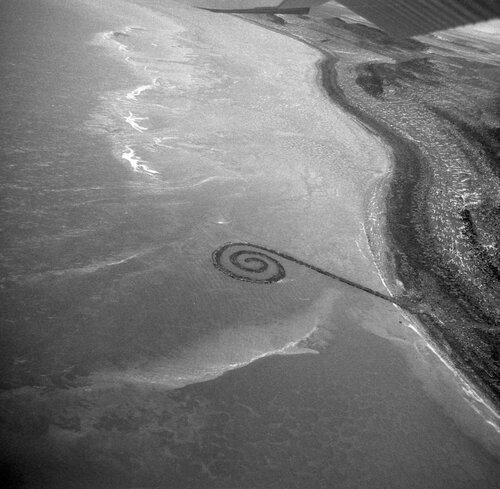On Art, Hopelessness, and Crisis, Part II
Art need not retreat from our moment to succeed as art, but it must not stoop to the remedial desire to change our moment. It is more than enough for works of art to register the human suffering the pervades our age. To register the suffering and paint nonetheless is a cry for a better world.
Ambivalence as a Tool, Part II
The task of the art critic (or any intellectual) is to prove that art still matters, that art still has a right to exist — even when she knows it might not, hence the importance of ambivalence as a critical tool.
Ambivalence as a Tool, Part I
We wanted to take contemporary art seriously, but so few artworks took themselves seriously.
The First Episode: Poetry of the Past — the Future, Part I
With the unforeseen rise of the proletariat upon the empty stage of world-history, with the supreme and final flourishing of free and propertyless labor, the age of social revolution — total cosmic transformation — begins.
Fleshing Out Music, Eros, & Reason
We may want opera, but are we capable of loving enough for it?
Taking Stock: First Month of Caesura
At Caesura, we are still making sense of who our audience is and who it can be.
Critique of Revolutionary Art: Trotsky, Benjamin, Adorno, and Greenberg
Modernist art for Trotsky could not be considered a new culture but rather an expression of the task and demand for transcending bourgeois society and culture.
On Art, Hopelessness, and Crisis, Part I
We have been a society in despair for quite some time. And without meaningful social existence, without the political possibility of imagining a better world, what possibilities are there for art?
Two, Three, Many Octobers: The Vanquished Tradition of the Avant-Garde, Part II
In pursuit of some kind of deliverance, the avant-garde had undertaken to record the endless parade of human suffering as it appeared in both the costume of a present ‘now’ and in the torn, worn-out rags of an unresolved past.
Translation as Conquest, Part II
The past doesn’t disappear into the present but thunders into oblivion along with it. The present is meant by the past, even if it’s not the future that the past had in mind.
The Most Constipated Man: Aesthetics in the Belly of a Worm
To be ‘cultured’ is also to dam up culture and become constipated.
The Naive Critic
The girl fulfills an ideal, which presents a potential of connecting/relating myself to that ideal. The painting represents the ideal of naivete I seek to develop in and through art criticism.
Individual Channels
The closure of public life provides a moment to reflect upon its usual reproduction, a question the club culture has not felt tasked to answer.
What Do Museums Have to Say to “The Public”?
The National Cowboy Museum’s Twitter feed in the hands of Director of Security Tim Tiller is the kind of voice we crave during the COVID-19 lockdown. Tim’s sincere charm cuts through the digital cacophony and has earned the Museum three hundred thousand plus Twitter followers and global platform. But more importantly, it’s the voice we’ve needed from art museums for a long time.
Two, Three, Many Octobers, The Vanquished Tradition of the Avant-Garde, Part I
Postmodernism can be characterized as a reaction to the negativity of modern art; it sees the violent separation of art and life and would like nothing more than to mend the wound that forced them apart.
Translation as Conquest, Part I
The nonbinding translations of today, those which attain a specious success (those we are too afraid to judge as bad — bad as translations, as poems) will not be forgiven. When they nestle into the dust of the archive, it will be as well-intentioned messages that exhaust themselves in what they say, not as artworks that continue to unfold in time.
The Academic Plague
Intellectualism sees institutions as trash islands damming up the river of life where cesspools fester, and wonders why humans don't instead amplify or store the energy of the river for the greater expanse of life. The academic is content to sniff the trash. Trash humping is an academic exercise.
The Rebirth of Beauty
“Kant was not a philosopher of art, but of freedom. Of what we could know, but do not yet know — and how even our instincts push us towards developing our faculties beyond them.” —Florian Walch
Response to “Art in the Age of AI”
What these three modes of aesthetic artifice/art/artistry have in common is an ugly obsession with purity. This makes Schneider’s analogy about religion and art especially worth investigation.
Rothko's Asceticism
I wanted to approach the paintings and be absorbed in their depth, but they refused me, turning away from my senses. This was a new force, an ascetic ideal that fixed my place in an obdurate world.



















